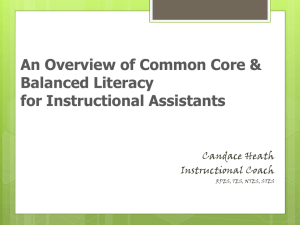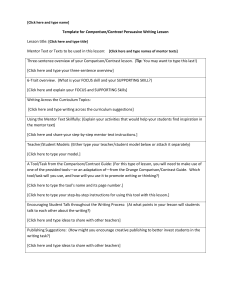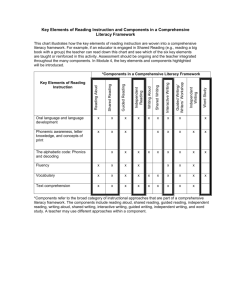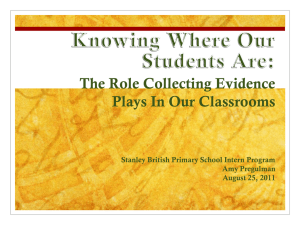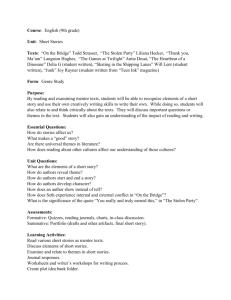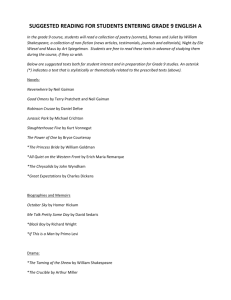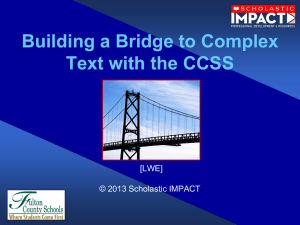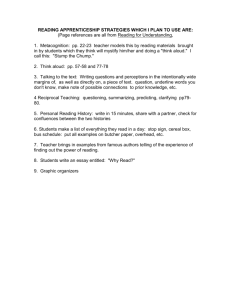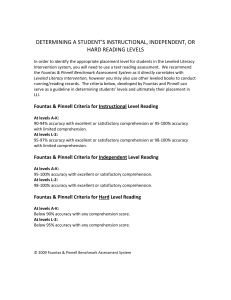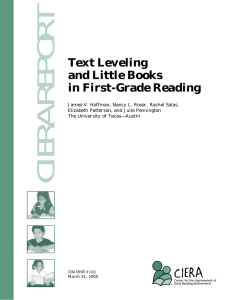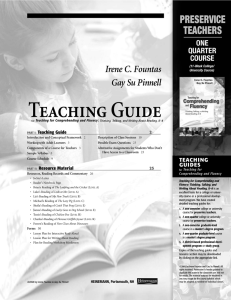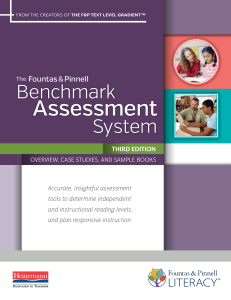“I See What You Mean”: Reading Response Through Sketching and
advertisement
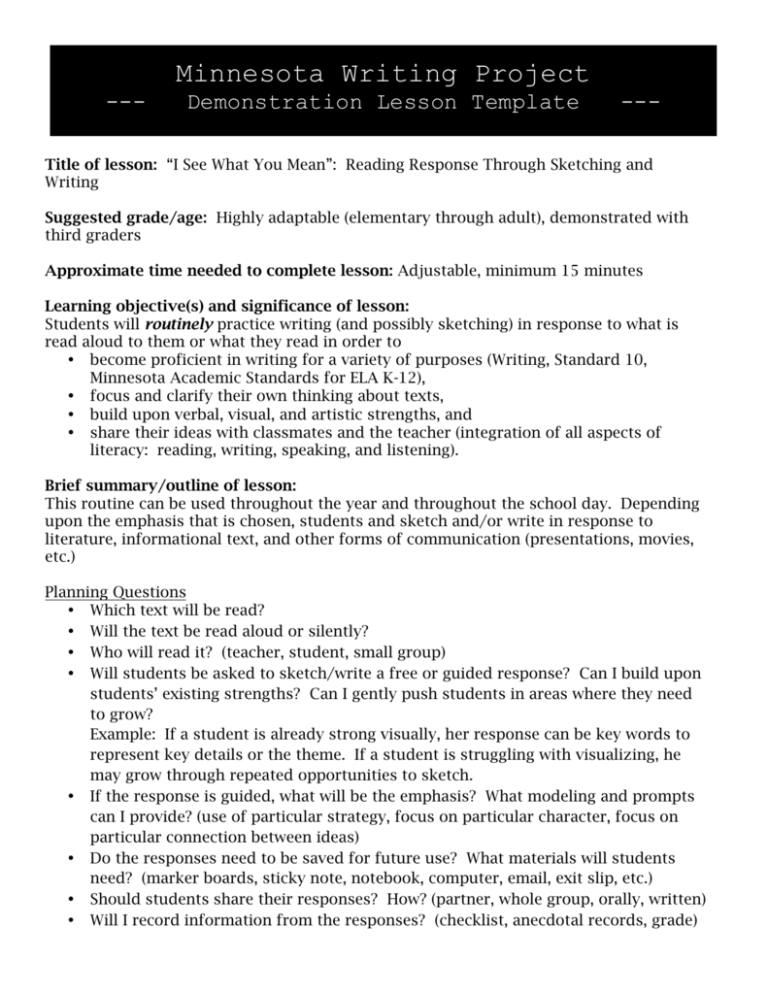
Minnesota Writing Project --- Demonstration Lesson Template --- Title of lesson: “I See What You Mean”: Reading Response Through Sketching and Writing Suggested grade/age: Highly adaptable (elementary through adult), demonstrated with third graders Approximate time needed to complete lesson: Adjustable, minimum 15 minutes Learning objective(s) and significance of lesson: Students will routinely practice writing (and possibly sketching) in response to what is read aloud to them or what they read in order to • become proficient in writing for a variety of purposes (Writing, Standard 10, Minnesota Academic Standards for ELA K-12), • focus and clarify their own thinking about texts, • build upon verbal, visual, and artistic strengths, and • share their ideas with classmates and the teacher (integration of all aspects of literacy: reading, writing, speaking, and listening). Brief summary/outline of lesson: This routine can be used throughout the year and throughout the school day. Depending upon the emphasis that is chosen, students and sketch and/or write in response to literature, informational text, and other forms of communication (presentations, movies, etc.) Planning Questions • Which text will be read? • Will the text be read aloud or silently? • Who will read it? (teacher, student, small group) • Will students be asked to sketch/write a free or guided response? Can I build upon students’ existing strengths? Can I gently push students in areas where they need to grow? Example: If a student is already strong visually, her response can be key words to represent key details or the theme. If a student is struggling with visualizing, he may grow through repeated opportunities to sketch. • If the response is guided, what will be the emphasis? What modeling and prompts can I provide? (use of particular strategy, focus on particular character, focus on particular connection between ideas) • Do the responses need to be saved for future use? What materials will students need? (marker boards, sticky note, notebook, computer, email, exit slip, etc.) • Should students share their responses? How? (partner, whole group, orally, written) • Will I record information from the responses? (checklist, anecdotal records, grade) Related Resources: Fountas, I. C. , & Pinnell, G. S. (1996). Teaching for comprehension and fluency: Thinking, talking, and writing about reading, K-8. Portsmouth, NH: Heinemann. Fountas, I. C. , & Pinnell, G. S. (2000). Guiding readers and writers (Grades 3-6): Teaching comprehension, genre, and content literacy. Portsmouth, NH: Heinemann. Olshansky, B. (2008). The power of pictures: Creating pathways to literacy through art. San Francisco, CA: Jossey-Bass. Resources Paper-based Response Resources • Think Mark—open-ended response bookmark originally created by Fountas and Pinnell http://lexington1literacy.wikispaces.com/5th+Grade (Scroll down to Independent Reading, Reader Response.) • Downloadable pages for strategy-related responses http://www.scholastic.com/teachers/top-teaching/2013/01/reading-responseforms-and-graphic-organizers • Reading Response Prompt Bookmarks and other learning strategy resources (elementary) from Into the Book by the Wisconsin Educational Communications Board http://reading.ecb.org/teacher/downloads.html (Click on Prior Knowledge, Linda’s Reader Response Bookmarks) Other Response Materials • Small dry-erase boards, about $1 each http://www.amazon.com/NEOPlex-Student-Laptop-Erase-Marker/dp/B001EW9I4W • Ideas for making dry-erase boards http://teachersnetwork.org/ntol/howto/adjust/c14661,.htm • Speech Teacher—free iPad application to record oral responses https://itunes.apple.com/us/app/speech-journal/id436945985?mt=8 http://letstalkslp.blogspot.com/2013/03/speech-journal-app-review-andgiveaway.html (Since this review Speech Journal is available for free.) Read Aloud/Mentor Text Ideas • Picture books for read alouds connected with strategies http://www.mauryk12.org/Literacy/reading%20mentor%20texts.htm • Mentor texts (at a variety of levels) for reading strategies http://www.mrsjudyaraujo.com/mentor-texts-for-reading-strategies/ • Reading, Writing, and Mentor Texts: Imagining Possibilities from the National Writing Project http://www.nwp.org/cs/public/print/resource/4090 • Writing Fix Website—prompts, mentor texts with lesson ideas, and much more from the Northern Nevada Writing Project http://writingfix.com/ • Children’s Choices Reading List—child-reviewed books, joint project of the International Reading Association and the Children’s Book Council http://www.reading.org/resources/booklists/childrenschoices.aspx Additional Reading • Strategy-related ideas using the New York Times—before, during, and after reading activities including Quick Writes, Text-on-Text group annotation, and the One-Pager response http://learning.blogs.nytimes.com/2011/06/14/the-times-and-the-common-corestandards-reading-strategies-for-informational-text/ • Elements of reading workshop, notebook and sticky note response examples http://www.scholastic.com/teachers/top_teaching/2009/10/reading-workshop • Article about how instruction of metacognitive strategies enhances reading comprehension and vocabulary achievement for third graders http://www.readingrockets.org/article/21160/ • Definitions of metacognitive strategies and related learning objectives http://reading.ecb.org/downloads/itb_Strategies&Objectives.pdf Possible extensions or adaptations for different purposes/student needs: • • • • • • Create an on-line space for students to share their individual thinking and then allow other students to respond create a dialogue. Adapt the focus for response. Middle school students might record interesting words they hear in a read aloud if you are working on word choice/vocabulary. Have students create story boards for novels or make novels into graphic novels to capture the imagery in the text. Include an area in a response journal for sketching so students have the option of adding sketches to their written responses. Have students exchange their sketches and describe the sketches orally or in writing to further vocabulary development. Consider using this routine in literature circles. For additional information, contact: merrily.wolters@isd624.org

